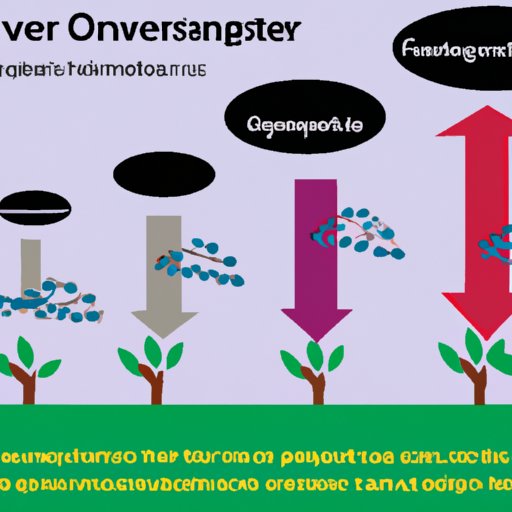Introduction
Overshoot is a term used to describe the process of exceeding the Earth’s capacity to regenerate resources and absorb waste. It is an issue that has been receiving increasing attention in recent years due to its potentially catastrophic impacts on the environment. In this article, we will explore the causes and effects of overshoot in environmental science, as well as potential strategies for reducing the damage caused by it.

Exploring the Causes and Effects of Overshoot in Environmental Science
The primary cause of overshoot is human activity. We have been using up the Earth’s natural resources at an unsustainable rate, leading to a situation where more resources are being consumed than can be regenerated or absorbed. This has resulted in a range of damaging effects, from climate change to species extinction.
As Dr. Mathis Wackernagel, the creator of the ‘ecological footprint’ concept, states: “Our global economy has outstripped Earth’s ecosystems’ capacity to provide us with renewable resources and absorb our CO2 emissions. We are now taking more from nature than can be replenished.”
How Can We Reverse the Damage Caused by Overshoot?
In order to reverse the damage caused by overshoot, it is essential that we understand the interconnectedness of human activity and the environment. It is important to recognize that all of our actions, no matter how small, have a cumulative effect on the environment.
Technology also plays a major role in averting overshoot. Technology can be used to reduce the amount of energy and resources used in production processes, as well as to improve efficiency and reduce emissions.
Strategies for Reducing Overshoot in Environmental Science
In order to reduce overshoot, there are a number of strategies that can be implemented. These include:
- Sustainable practices: Sustainable practices aim to reduce the impact of human activity on the environment by minimizing resource consumption and reducing waste. Examples of sustainable practices include recycling, composting and the use of renewable energy sources.
- Renewable energy sources: Renewable energy sources such as solar, wind and hydroelectric power can help to reduce our dependence on fossil fuels, which are one of the primary drivers of overshoot.
- Conservation measures: Conservation measures such as land and water management can help to reduce pressure on the environment and preserve natural habitats.
Conclusion
In conclusion, overshoot is a major issue in environmental science that has caused extensive damage to our planet. In order to reverse the damage caused by overshoot, it is essential that we understand the interconnectedness of human activity and the environment, as well as implement strategies such as sustainable practices, renewable energy sources and conservation measures.
We must all work together if we are to avert the devastating consequences of overshoot. By taking action now, we can protect the environment for future generations and ensure the sustainability of our planet.
(Note: Is this article not meeting your expectations? Do you have knowledge or insights to share? Unlock new opportunities and expand your reach by joining our authors team. Click Registration to join us and share your expertise with our readers.)
